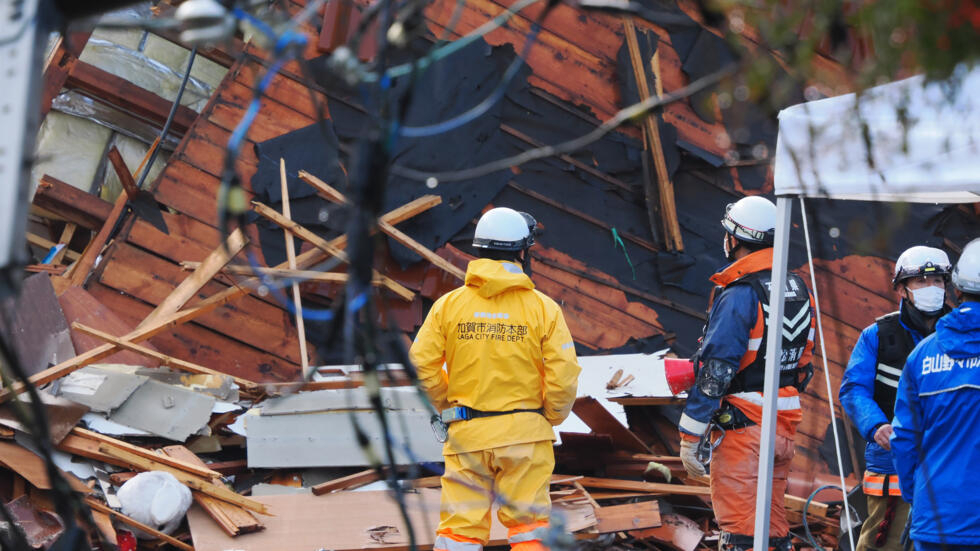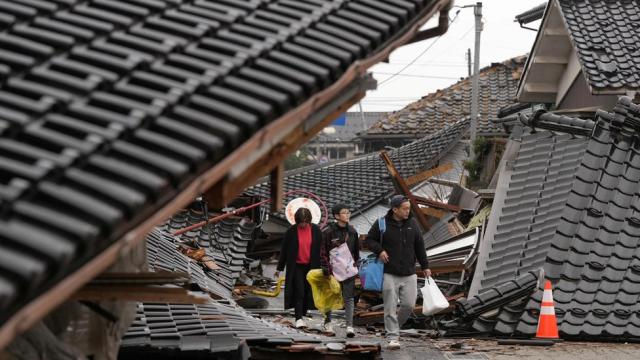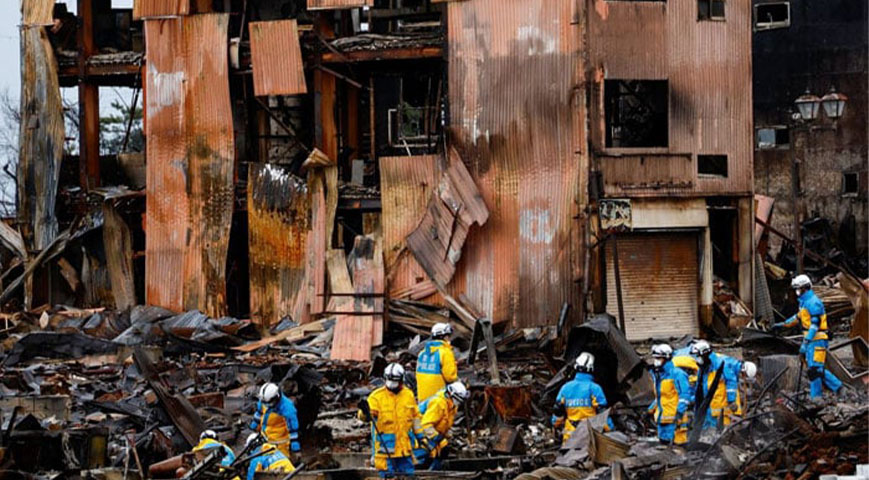A 90-year-old woman was rescued from underneath the ruins of a two-story house five days after a devastating earthquake hit Japan.
According to Japan's national broadcaster NHK, rescuers located the woman in Suzu City, Ishikawa prefecture, on Saturday evening, 124 hours after the earthquake struck, and transported her to a local hospital.

A doctor told reporters on Sunday that the woman is awake and talking, but her legs are wounded.
Did you read this?
According to Kume Takanori, a member of the emergency rescue squad, the woman's knees became trapped beneath furniture in an extremely narrow passage between the first and second floors. Takanori said it took hours to release her.
On January 1, a 7.5 magnitude earthquake rocked central Japan, prompting tsunami warnings as far east as Russia. Thousands of people living along the coast fled after houses and roads collapsed. Many structures were also destroyed by fire.
According to the most recent data released by Japanese authorities on Saturday, the accident has killed at least 126 people.

The first 72 hours after a natural disaster are "absolutely critical" for search and rescue activities. Experts refer to this as the "golden period" for locating survivors because the situations of persons trapped and injured might quickly deteriorate.
Teams on the ground have been racing against the clock to save victims buried under rubble.
The exact scope of the damage is still unknown, but Japanese officials claim more than 200 people are still missing. In Ishikawa, search and rescue activities are still underway.
According to NHK, numerous roads are still closed, making it impossible for emergency personnel and cars to reach survivors.
In response, Japanese Prime Minister Fumio Kishida announced in a statement released on X that traffic restrictions would be introduced around the earthquake zone beginning Sunday.
Traffic will be prohibited from entering the impacted areas to allow disaster recovery vehicles to pass freely.









